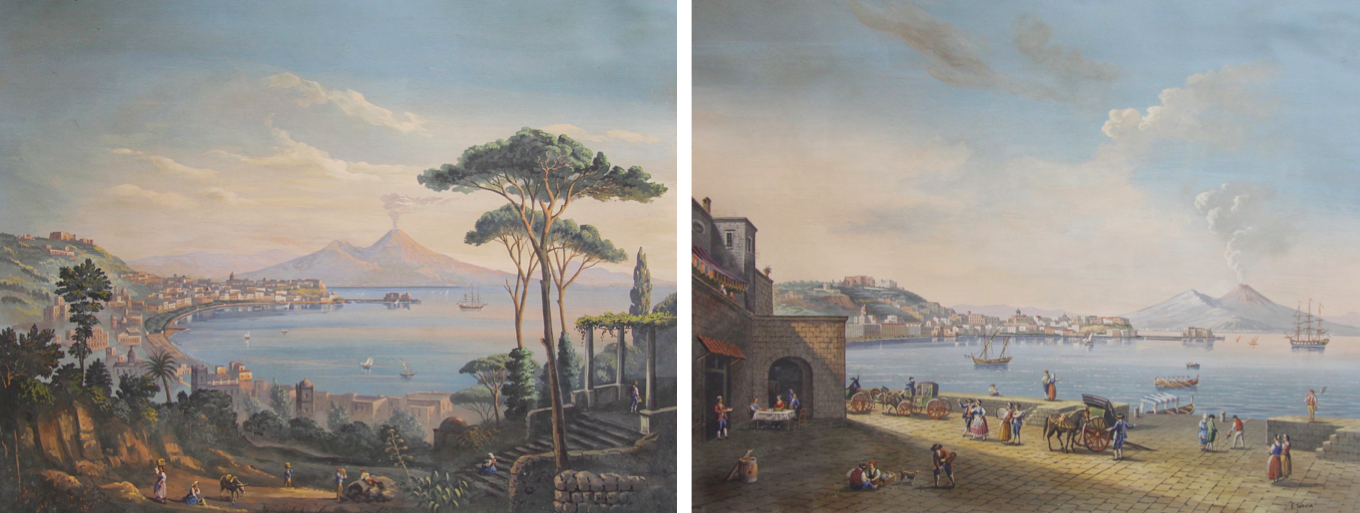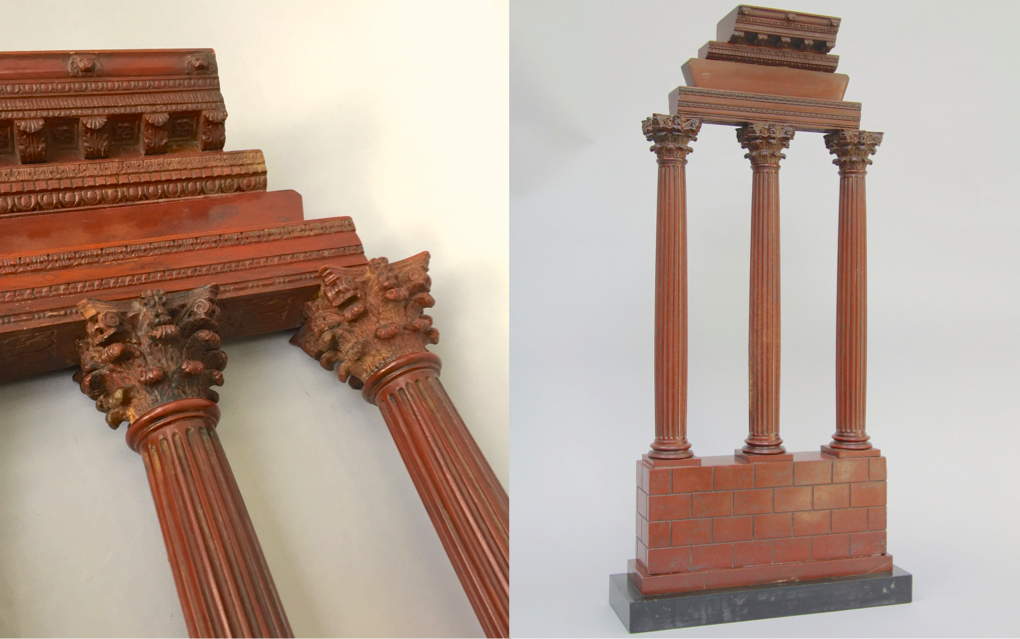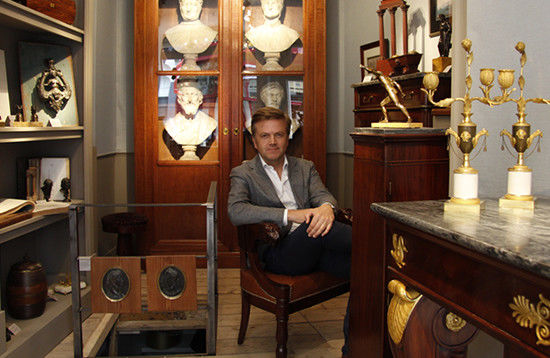Treasures from the Grand Tour
Robert Schreuder Antiques houses a unique collection of antique objects. Among his specialities are Grand Tour Souvenirs: collectables that echoe the journeys of young and erudite travellers.
In the 18th and early 19th Century, it was customary within the upper classes for young men to undertake a Grand Tour of Europe. This journey took them along the remnants of classical antiquity and the splendid architecture of the Renaissance and Baroque ereas, enabling them to study these in-depth.
The well-born young men thus became acquainted with the most important historical developments in art, architecture, culture, politics and science, essential to the maturation of their "good taste".
The Grand Tour followed a specific itinerary that primarily included stops in Italy and France. Excavation sites in Rome, Venice, Napels and Pompeii and of course the mighty mount Vesuvius were some of the most important highlights of the trip.
The social aspect of this undertaking also played a significant part, opera and salon visits established meaningful connections. Although one's cultural enrichment applied as the main purpose, casino-visits were made on the regular, resulting in several young men losing their innocence whilst on the Tour.
This long and tedious journey, usually made on horseback, also counted as a form of initiation: those who braved the Alps, defying predators and other hazards in order to witness the Italian light with their own eyes, returned home with a unique degree in life experience. Such fine exemplaries had completed their education to expectation and were set to inherit the family business as confident young adults.
 A pair of Grand Tour views of Naples in early morning and late afternoon.
A pair of Grand Tour views of Naples in early morning and late afternoon.
The Grand Tourists often brought back memorable souvenirs to show their greater knowledge and to boast about their sophisticated taste in Classical Art.
These souvenirs included models of ancient buildings and ruins, antique statues originally made of bronze, alabaster, marble or plaster, micro-mosaics and drawings of archaeological sites. Such collectibles were displayed prominently within their homes and became conversation pieces as well as objects for further study.
These treasures all adhere to the classical standards of beauty and refer to the cultural phenomenon that was the Grand Tour.
 Marble model of the temple of Castor and Pollux.
Marble model of the temple of Castor and Pollux.
Grand Tour tourists considered the remains of this temple to be an outstanding example of Roman architecture, models of the temples of the Forum Romanum were therefore very much sought after as souvenirs. The temple of Castor and Pollux dates back to the beginning of the Roman Republic and was dedicated to the Dioscuri in 484 BC, to thank them for helping the Romans in the battle against the Latin’s. The temple was restored during the reign of emperor Hadrian.

Robert Schreuder Antiques, Nieuwe Spiegelstraat 48, Amsterdam.
For more artworks please have a look at Gallerease and do't forget to subscribe to our newsletter below.

